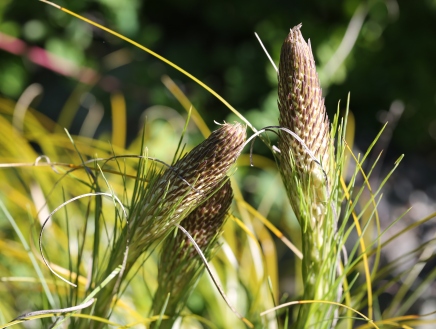Ethnobotany. This plant was used by many First Peoples: Blackfoot, Chehalis, Cowlitz, Hesquiat, Hoh, Hupa, Karok, Klallam, Maidu, Makah, Montana, Nitinaht, Okanagan-Colville, Pomo, Quileute, Quinault, Yama, Yurok. Poultices of chewed roots were applied to wounds, breaks and sprains. The plants used to decorate baskets and garments. The leaves were woven into water tight baskets used for cooking. The bulbous rhizomes were roasted for several days before being eaten.
Description from the Flora of America. Stems (0.8–)1.2–1.8(–2) m. Leaf blade 2–8(–10) dm × 2–4(–6) mm. Racemes 5–7 dm. Tepals oblong to lanceolate, 6–9 × 2–3 mm; styles 4 mm. Capsules 5–7 mm. Seeds 4 per locule. 2n = 30. Flowering spring–early summer. Open coniferous woods, dry ridges, rocky slopes, and clearings; 0–2300 m; Alta., B.C.; Calif., Idaho, Mont., Oreg., Wash., Wyo.









